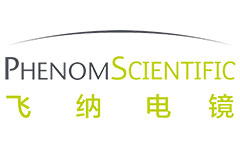XIAMEN ATTRACTIONS
XIAMEN ATTRACTIONS
Xiamen is a port city on China’s southeast coast, across a strait from Taiwan. It encompasses 2 main islands and a region on the mainland and surrounding countryside provides spectacular scenery and pleasant tree-lined beaches.
Xiamen and the surrounding countryside are famous for being an ancestral home to overseas Chinese. It became one of China’s earliest Special Economic Zones in the 1980s. Xiamen has been voted China’s cleanest city and Gulangyu Island is vehicle-free.
Gulangyu Island
Gulangyu, or “Drum Wave Islet”, is a small island off the coast of Xiamen City. There are many scenic spots on the island including Sunlight Rock and the Shuzhuang Garden.
Gulangyu Island is renowned for its beaches as well as winding lanes and varied architecture. The island is on China’s list of National Scenic Spots and also ranks at the top of the list of the ten most-scenic areas in Fujian Province.
Entrance Fee: Free (walking around the island)
Opening Hours: 24 hours
How to get there: Visitors can reach it by ferry from Xiamen Island in about 5 minutes.
Sunlight Rock
Sunlight Rock is also known as Dragon Head Hill. As the highest point of Gulangyu Island, Sunlight Rock Scenic Area includes Sunlight Rock and Piano Garden.
There is a saying that if you haven’t ascended Sunlight Rock, you haven’t really been to Xiamen. Perched atop Sunlight Rock is a gigantic stone with a diameter of over 40 meters.
Sunlight Rock Temple was first built in the Ming Dynasty and was famed far and wide, attracting accomplished monks throughout the dynasties. Connected to Sunlight Rock via cable car is Piano Garden where you can find Hero Boulder, the Aviary and an outdoor cinema;
Entrance Fee: CNY 86
Opening Hours: 07:00-20:45
How to get there: take a boat from the ferry terminal just across the commercial Zhongshan Road.
Zhongshan Road
Over 200 shops line the streets of Zhongshan Road including chain store outlets and trinket shops. The road is pedestrianized and get very busy, especially at weekends and during Chinese holidays. Most of the buildings are a combination of Victoria-era and Chinese traditional architecture (two-storey buildings known as “Qi Lou” - riding across buildings).
At night Zhongshan Road is bright and alive with different colours, sounds and smells. Busy with shops and street vendors. Zhongshan Road is more than just a commercial street, it is a leisure, entertainment and food center in Xiamen.
Hulishan Fortress
Hulishan Fortress is a spectacular site with impressive gates and surrounded by walls made of granite. Built in 1891 and situated on the southern tip of Xiamen Island, its buildings are distinctive to the military style of the Ming Dynasty and Qing Dynasties. The fortress houses a barracks, a secret tunnel, a tower, a sentry platform, the ammunition depot, the trench, and the castle.The German-made Krupp Cannon is the largest existing coast cannon of its kind in the world.
Entrance Fee: CNY 25
Opening Hours: 7:30-18:00
How to get there: Several buses service the Fortress including Nos. 35, 96, 812, 616, 618, 531, 503, 811, 809, 106, 87, 86, 82, 48, 47, 29, 22, etc.
Nanputuo Temple
The Nanputuo Temple is located on the southeast of Xiamen Island and was founded in the Tang era. The name Nanputuo literally means South Putuo with Putuo referring to the mountain in Zhejiang province.
The buildings include Devajara Hall (the Hall of Heavenly Kings), Mahavira Hall (Daxiongbaodian), Dabei Hall (the Hall of Great Compassion) and a Pavilion built in 1936. The monks of Nanputuo are often seen on the nearby busy downtown streets. The Nanputuo
Entrance Fee: CNY 3
Opening Hours: 08:00-20:00
How to get there: take Buses No. 45, 87, 17, 18, 29 or 47 from the downtown area to the Nanputuo Temple











